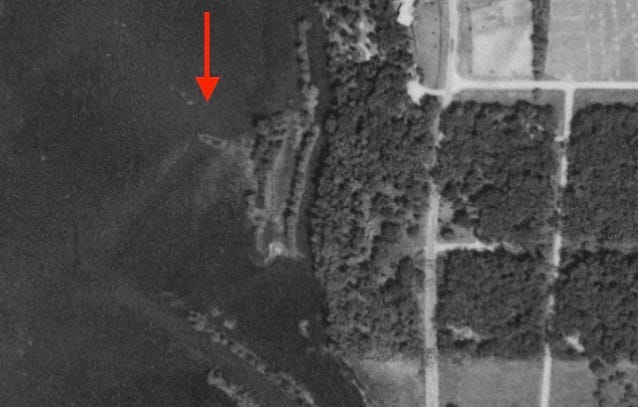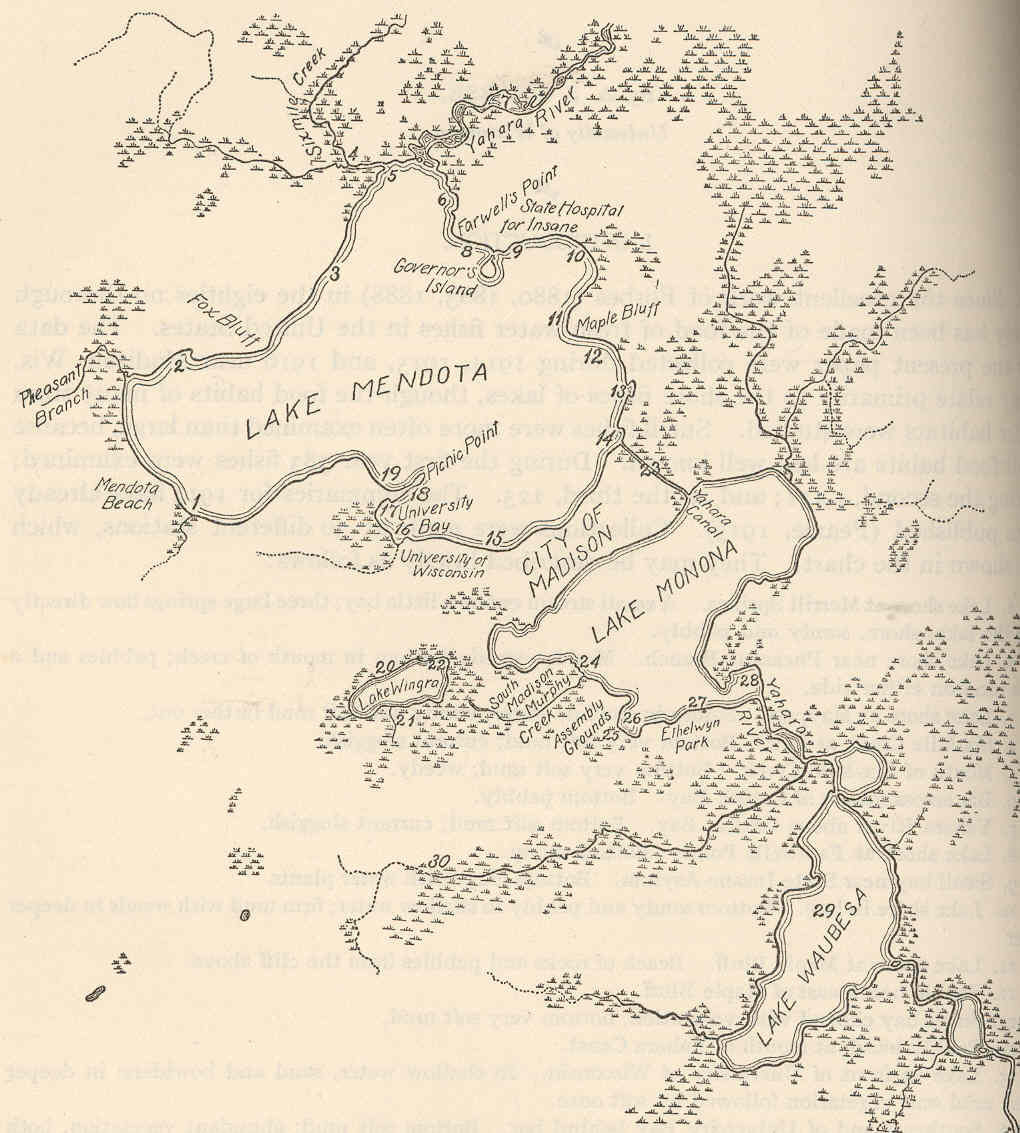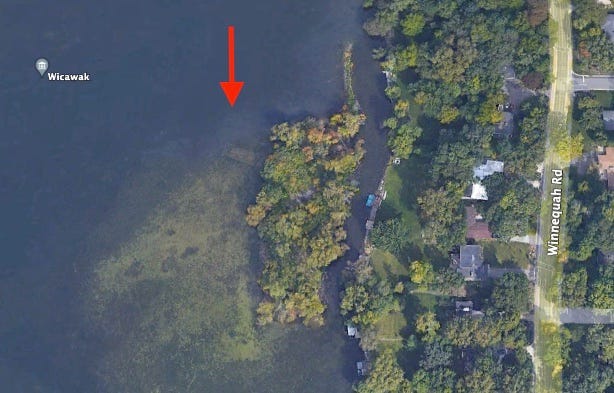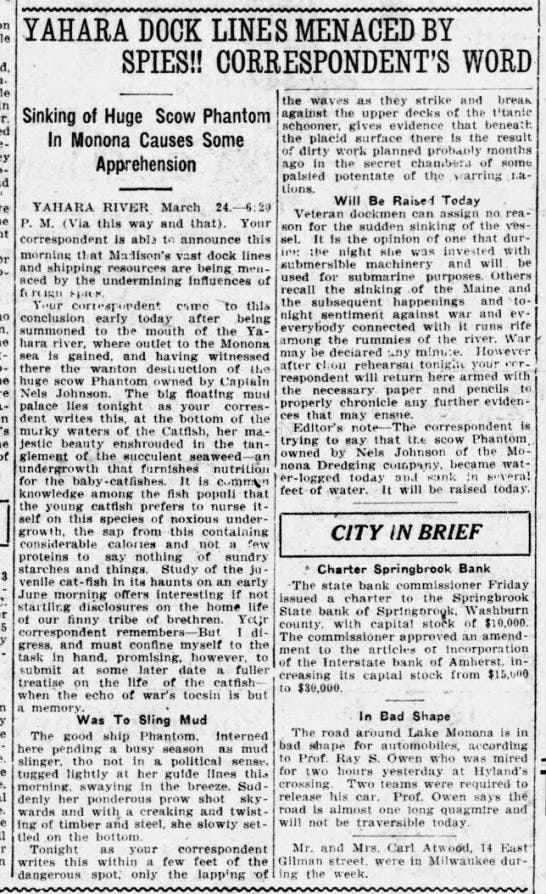What is that Submerged Structure
an exercise in hyperlocal century-old research
I was surfing the various local subreddits, as one does, and came across this post from early 2023. The OP asked: “What is this submerged structure?” Shown below, this submerged structure is visible below the water in Google Maps images of the Lake Monona in Wisconsin, far too large to be a simple dock.
As a “one-hand-over-eyes” visitor to r/submechanophobia1, this title immediately tickled me.
Same Question, 2020
It turns out, people have had this question for a few years. The same question was asked in summer 2020 on a historical area FB group.
In both places, responses ran the gamut: pier, dock, bait stand, icehouse, algae-cutting boat, barge, dredge, turtle home.
Same Question, 2005
See, the thing is, people have been asking the question about this structure for decades.
The February 20, 2005 Wisconsin State Journal brings up the same question in their “Just Ask Us” section. Quote:
Q: Does anyone know what the timber and beam foundation protruding out of the water near Frost Island in Lake Monona's Squaw Bay is from?
A: To explain a legend, you have to ask a legend. We asked two: Dave Branley and Tony Russos, both retired from the Dane County Sheriff’s Office, both with encyclopedic knowledge of Dane County's lakes. The wreck in question is in about 18 inches of water a few yards west of Frost Island. Branley said the timbers and metal frame are the remains of an old barge that was grounded there many years ago. "It couldn't be removed so it was left to rot," he said, adding it has been there for as long as he can remember. Russos, who lived on Squaw Bay for many years, said the wreck dates from at least 1960 and is an abandoned dredge.
You’re Not Looking Far Enough Back
Turns out, the 1960s isn’t really a sufficiently imaginative estimate.
In the 1930s, the USDA did a a series of aerial images. The Wisconsin images were recently digitized and put online through the Wisconsin Historic Aerial Imagery Finder site.
And indeed, in a 1937 image of the then-unnamed Frost Island, the “1960s barge” is crystal clear, abandoned 30 years before previous estimates.

It was slightly more boat-shaped in 1937.
A lot more boat-shaped, in fact2.
A Brief History of Dredging Lake Monona
Lake Monona3, aka “Third Lake”, is one of the Wisconsin capitol's picturesque string of lakes.

Originally the marshy area was settled by the Winnebago/Ho-Chunk, who were forcibly removed from their lands by the onrush of white settlers moving east in the late 1800s.
With the onrush of forced modernity came problems.
Modern plumbing meant sewage had to go somewhere. And because the city government at the time decided sewage treatment plants were too expensive, that solution was “pump it into the lakes”, with a preference to trash Lake Monona4. This, of course, led to stink, bacteria, and massive weed/algae growth, problems which still persist in 20235.
Back in the 1800s and 1900s, the solution was brute-force: weed-cutting via hand, and after 1905, by boat, scow, and barge.
The rise of the automobile and groups like “Madison Park and Pleasure Drive Association” promoted reshaping of the natural environment to suit human needs. A lock was added around the turn of the century on the Yahara to connect Lake Mendota ("Fourth Lake") to Lake Monona6.
That sorted, attention turned to the southeast side of Monona, where more marshland struggled to connect Monona to Waubesa (“Second Lake”). Pleasure boaters wanted to be able to move through all the lakes; they didn’t want to have to portage.
The Yahara Improvement Association7, headed by W. W. Warner8, hired Monona Dredging Co. for the river improvement in March 19119. In fact, as Monona Dredging Co. was incorporated in 191110, the company may have been founded for this very purpose.
The work was well-complete by 1914, though dredging became a continual task in order to stay on top of the rapid weed growth. Monona Dredging Co., headed by one Nels Johnson, former Great Lakes coal and wood merchant, stayed active in the Madison area until the late 1920s.
And it’s here that the stories merge.
Menaced by Spies!!
Apparently the papers were light on actual news if they could devote two long-winded columns to news that could be summarized in a sentence, but the point stands thusly: Monona Dredging Co. operated a dredging scow named Phantom that sank “at the mouth of the Yahara river where outlet to the Monona sea is gained” in March of 1917.
The Historical Society has a photo of that scow, or a similar one, from around the same time.
A year earlier, in April 1916, a case sat before the Railroad Commission regarding the height of a railroad bridge between Monona and Waubesa11. Quote: “One witness [in the case] is the owner of a dredge which he would like to move into Lake Waubesa , but which he is prevented from moving by the presence of the bridge. There are two other dredges now on the lakes in the vicinity of Madison. The largest of these dredges is 10 feet high and 20 feet, 5 inches wide. The smallest is 5 feet high and 15 feet wide.”12
Now, these incidents may be unrelated, and they may not be. Monona Dredging Company most certainly operated one of these dredges, based on contemporary sources listing dredging companies in the area. If a bridge was making it difficult or expensive for business to proceed, perhaps an “accident” with the dredge/scow would lighten the expense ledger.
Case Solved?
Maybe, maybe not.
The news article did say the Phantom would be raised from its shallow grave the next day. So this is certainly all just speculation, over a century later.
But it’s as good a theory as any about what that submerged structure is.
Not to be confused with the equally terrifying subreddits, r/submergedanimatronic/ and its lesser-read r/submergedanimatronics.
Cue Lynne Thigpen and Rockapella, fellow 90s brethren. And if you have not yet seen Defunctland’s history, then you’d better be clicking below, lads.
Known, perhaps most widely, for being the site of Otis Redding’s plane crash in December 1967. 1968 Rolling Stone article; Wiki article.
It wasn’t until 1952 that Madison fully stopped putting sewage into the lakes. Gross.
Why are there still issues in 2023? “Urban runoff”, aka fertilizers, road salt, and “leaf stew”, if you’re ever curious why area residents are strongly encouraged to leave their leaves in their yards and why the local Redditors are maniacs on the topic of sidewalk salt.
A 1910 UW Madison bachelor’s thesis describes the association, their goals, and other aspects of dredging the Yahara. If only MY bachelor’s thesis could have been on such a straightforward topic.
Wilbur William Warner, a one-time member of the city water board with a very cool name, donated a lot of money for a lot of things, including one of the entrances to Devil’s Lake State Park and money towards Conklin Park (today’s James Madison Park).
See page 13 / 581 of G.R. Angell’s 1911 Madison City Directory as well as The National Corporation Reporter Vol 42. It’s also neither here nor there, but interesting that Monona Dredging was one of 800 employers in Wisconsin who declined to participate in the workman’s compensation act as of late 1913.
Where modern maps show Lower Yahara River Trail leaving Lake Farm County Park.





WHAT A SCOOP